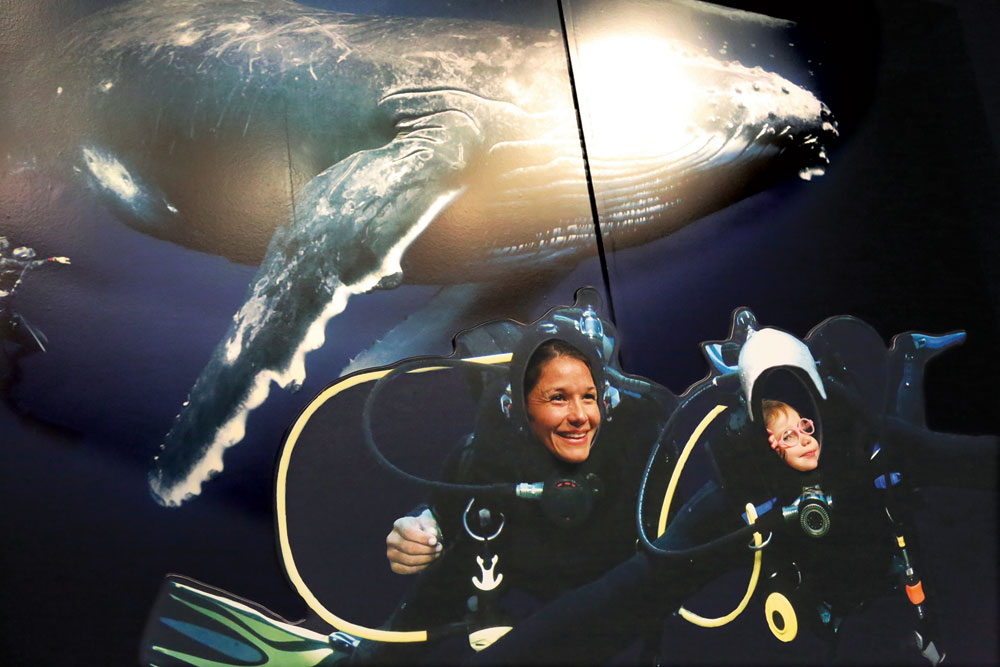
Museum visitors pose as divers swimming by a whale at the new DMNS exhibit about whales.
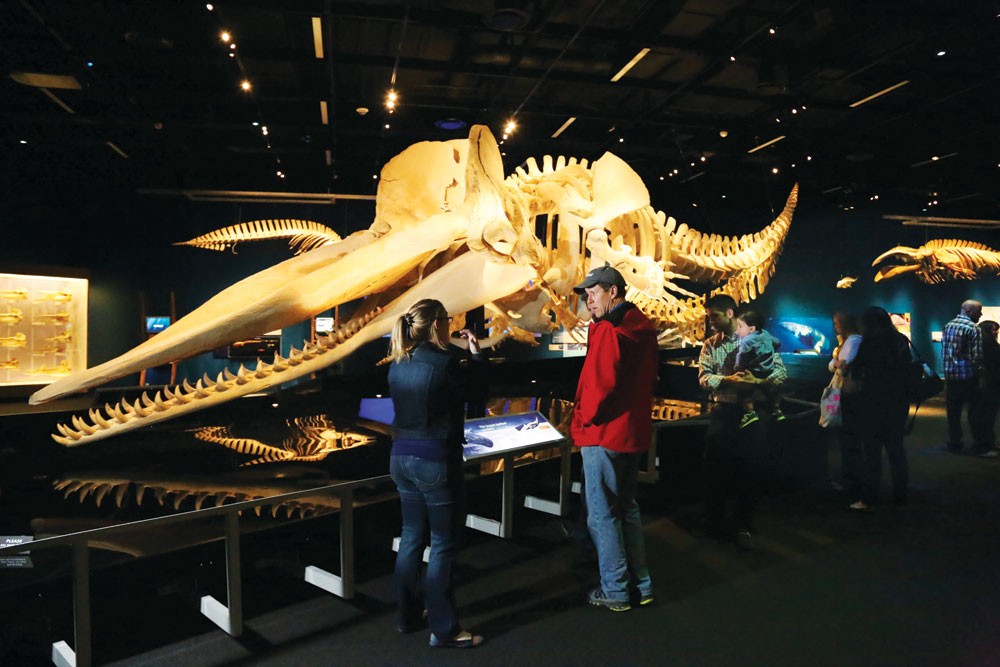
Two sperm whale skeletons—the largest 50 feet long—greet visitors to the exhibit.
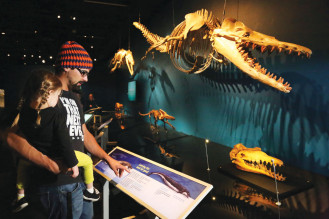
Whales are among only a few animals that evolved from land-dwelling ancestors. Whales became aquatic about 50 million years ago.
Whales: Giants of the Deep, at Denver’s Museum of Nature & Science, might be the closest many of us landlubbers get to these giant mammals.
Two sperm whale skeletons—the largest 50 feet long—greet visitors to the exhibit, here through Feb. 15. Whale song, soothing and wild, accompanies the exhibition’s tour of whale evolution, behaviors and biology—which is surprisingly similar to humans—as well as a culture strongly connected to whales.
“Whales share characteristics with humans because they’re mammals,” said Jill Katzenberger, on-site coordinator for museum programs. “They have digits in their flippers like we have fingers because they evolved from land animals. The articulated digits allow them to maneuver well in the water.”
Whales’ brain anatomy—especially dolphins, which are also whales—is quite similar to humans’. “The part of our brain we use to think, reason, problem-solve, dream and feel emotions is similar to dolphin brains,” said Katzenberger. “They are able to process information at a high level. Toothed whales have the most developed brains so they can strategize when hunting.”
Whales use echolocation, a clicking sound, to locate food and communicate with other whales as far as 1,000 meters away. An immersive sound chamber allows visitors to hear the songs and sounds of different whales.
“It’s an ‘ah-ha’ thing for visitors to hear the diversity and variety of sounds,” said Maura O’Neal, communications and media relations manager.
Humpbacks have the most recognizable songs. “The long crooning sounds are the males calling to the ladies,” Katzenberger said. “Humpbacks have unique songs that evolve over their lifetime. Also humpbacks influence each other’s songs and cause them to change over time.”
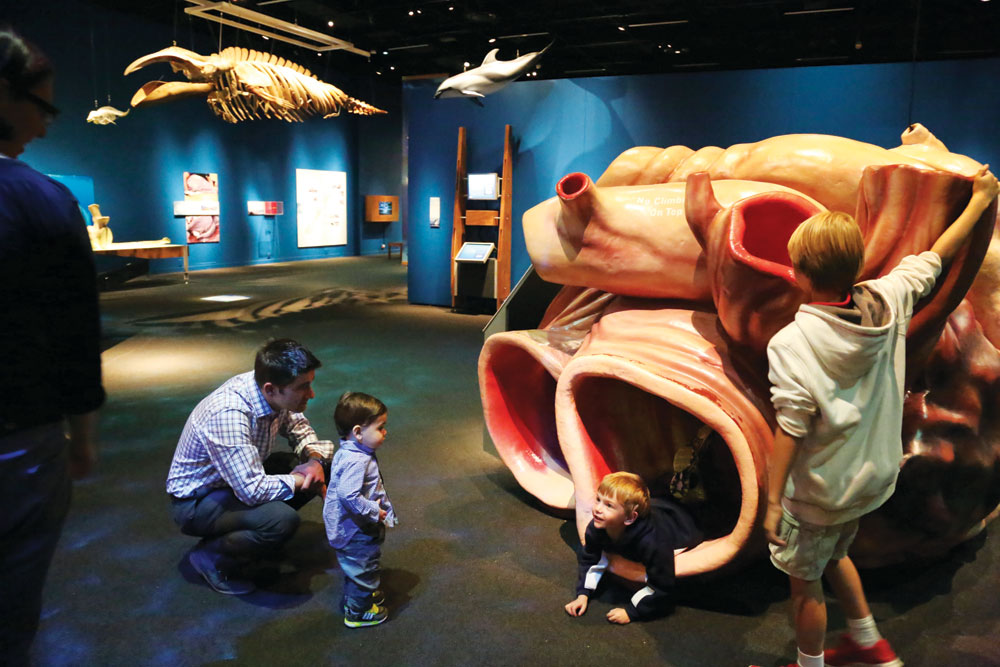
A replica of the heart of a blue whale is six feet wide. The largest animal that ever lived, it is up to 100 feet long and weighs upward of 160 tons. The heart pumps about 80 gallons of blood with each beat. Today’s blue whale population is 10,000-25,000, compared to around 300,000 before targeted whaling began in the late 1800s.
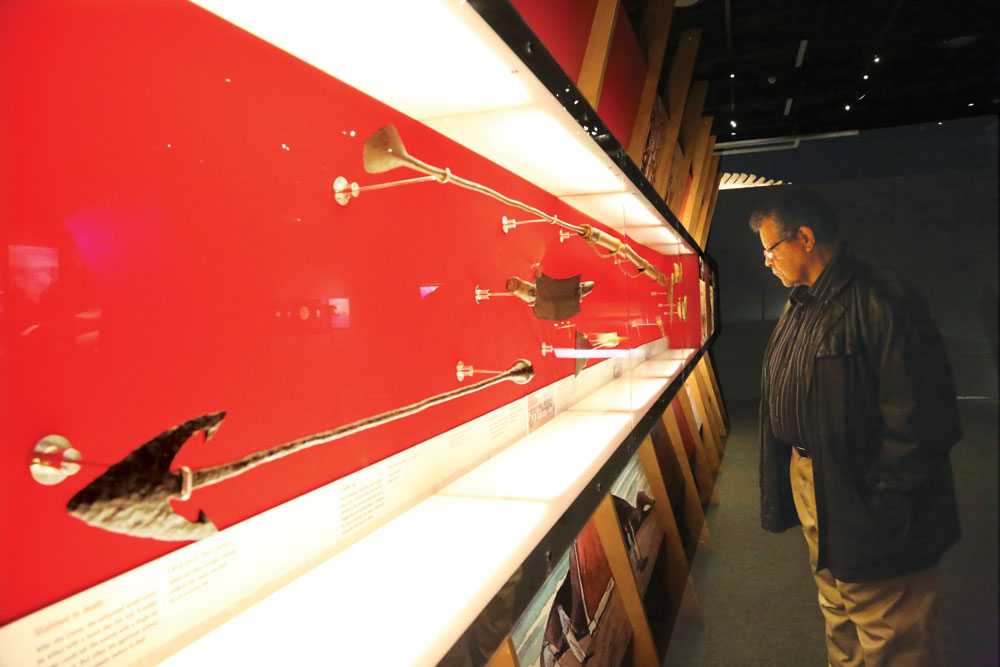
The display shows spears and harpoons used by commercial/industrialized Western whalers in the 1840s-1860s. Also on display are Maori cultural objects, including weapons made from large whale bones and delicate ornaments fashioned from whale teeth.
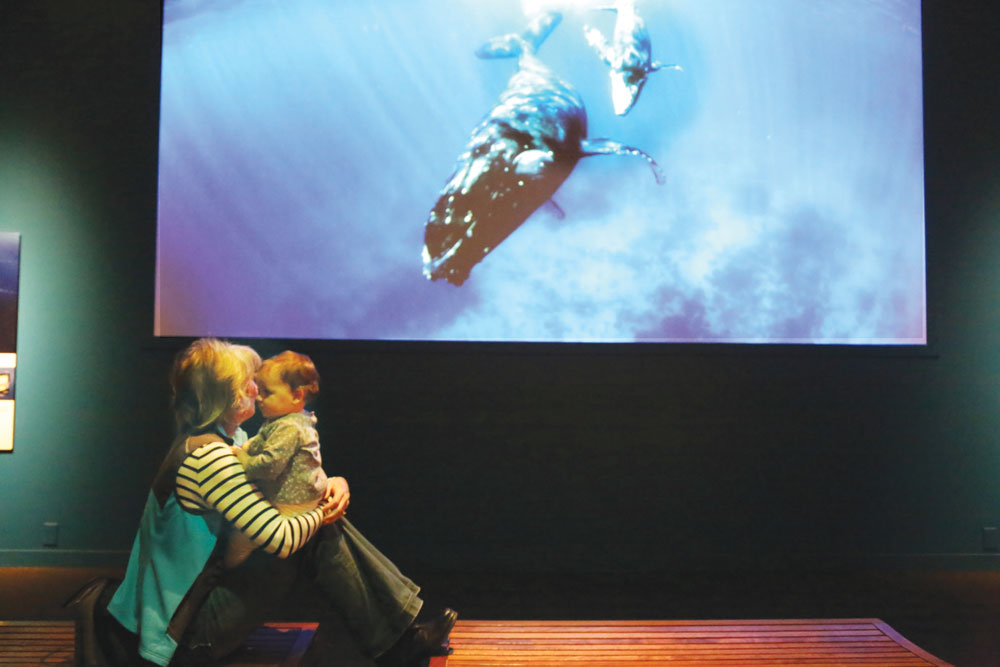
A mother and child watch a video of a sperm whale with her baby hunting a giant squid. Whales can dive deep—3,000 to 7,000 feet—without their body cavities exploding, and surface without getting the bends (decompression sickness) like humans do. Special breathing adaptations allow them to release the air in their lungs before they dive down, preventing pressure, and use the oxygen in their blood for prolonged dives.
Whales can learn new sounds from other animals and even humans. Orcas in captivity have learned sounds made by nearby sea lions and human trainers.
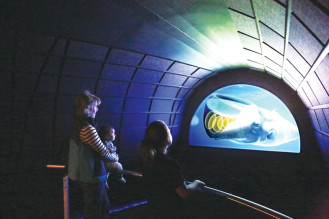
Whales use echolocation, a clicking sound, to target their prey within a range of about 200-325 feet.
“Exploration stations” throughout the exhibit include interactive videos, models and high-tech games. Visitors can crawl through a life-size replica of a blue whale heart, identify different types of whales, and catch food like whales do.
A fun fact is that whales evolved from hoofed land-dwelling ancestors and became aquatic about 50 million years ago. The whales’ earliest ancestor looked something like a wolf. A video shows the feet becoming flippers and the back legs finally disappearing. “They became large and their bones became less dense, so they can’t support their body weight on land,” Katzenberger said.
Whales can become beached or stranded for many reasons, Katzenberger said. “Especially in New Zealand, they become stranded in coves where the tide recedes quickly and they can’t get out. Disease or disorientation can cause stranding.
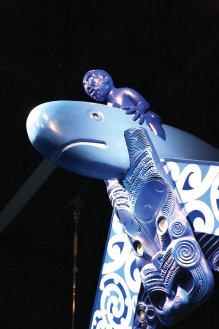
The roofline of a Maori meeting house features Maori ancestor Paikea riding a whale.
Scientists speculate that the sonar used on ships can interfere with their echolocation and cause disorientation.”
An estimated 300,000 whales die each year because of commercial fishing operations. “Many get caught in fishing nets deep down, or get hit by boats,” Katzenberger said.
Fortunately, some whales in trouble can be saved, she said. A model shows a pilot whale being boosted onto pontoons. “Folks come together to rescue whales and try to get them back into the water. In a mass-stranding, all the whales have to be moved into the water at once. Because those in the water will come right back up on shore when they hear a distress call from others in their pod.”
Most whale populations are endangered, Katzenberger said. “The Atlantic right whale has only about 300–500 individuals left. Some populations have seen an increase since whaling was banned in 1986. Today’s blue whale population is 10,000–25,000, compared to around 300,000 before targeted whaling began in the late 1800s. Some dolphins are endangered and some are extinct.”
The final part of the exhibit explores the Maori whaling culture in New Zealand. The Maori origin legend tells the story of the ancestor Paikea, who gets stranded at sea and is rescued by a whale. He rides to the coast of New Zealand on the whale.
The exhibit began at the Te Papa Tongarewa museum in New Zealand in 2006. Representatives from the Te Papa helped install the Denver exhibit. “The 20 real specimens in the exhibit, which came from whales that stranded in New Zealand, are believed to be imbued with the spirit of the animal, so the representatives act as caretakers to bless the bones and transfer their guardianship to us temporarily,” said Katzenberger.
Exhibit entry is included with general admission: $8–$13; children under 3 free. For more information, call 303.370.6000 or see dmns.org.



0 Comments